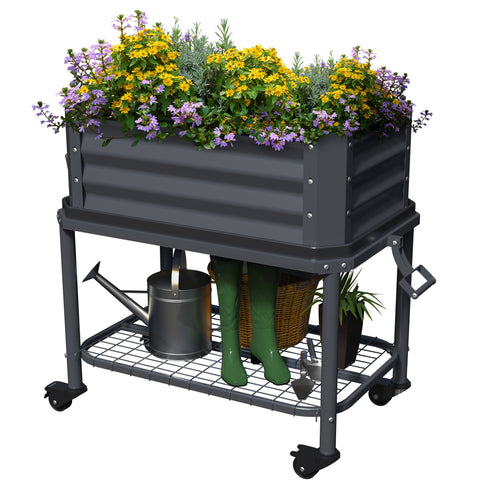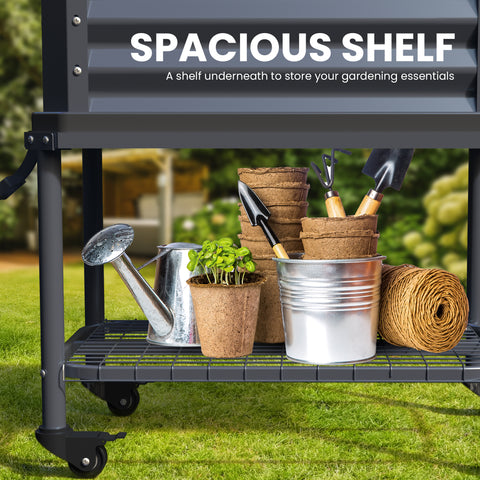There are many benefits to planting garden beds Landscaping: Garden beds can add to the beauty of your home or yard. The colors and shapes of flowers can create pleasing visual effects. Improve air quality: Plants absorb carbon dioxide and release oxygen through photosynthesis, which can help clean the air and improve indoor and outdoor air quality. Provide food and medicine: Growing vegetables, herbs and fruits in your garden bed can provide healthy food and medicine for you and your family. Increase ecological diversity: Growing different types of plants can attract different kinds of insects and birds and increase ecological diversity. Increase outdoor activities: Working in a garden bed can provide opportunities for exercise, such as weeding, pruning and harvesting. Reduce stress and anxiety: Garden work can be relaxing and reduce stress and anxiety.The following content also has some reference value for raised garden beds.
A garden bed for spring can help your garden flourish this season by following some steps:
Clean up: Remove debris and weeds from the bed. Cut or dig away old or dead plants and fallen leaves to make room for new ones. Check your garden bed for any rot of damage. Here is where sturdy raised garden beds really work to your advantage. If you are using a no-rot raised garden bed, a little surface cleanup should have it looking good without need for further upkeep.
Tilling: Turning over the soil with a hoe or tiller to loosen the soil and improve drainage. If the land is heavy, organic matter (such as decomposed compost, leaf rot and compost) can be added to improve the soil structure and nutrient content.
Test your soil for PH: If you haven't tested your soil for PH, invest in a portable soil tester. Most plants need a soil pH between 6.0 and 7.5 to grow healthy. If the soil is too acidic, lime can be added to neutralize it.
Choose plants: Choose plants that are planted and grown in spring, such as tulips, daffodils, jasmines, irises, etc. You can choose to plant from seed or buy adult plants. Choose plants that suit your area and the type of soil on your bed.
Planting: Burying seeds or plants into the soil by hand or spatula, depending on how deep the plant is planted. Plant plants separately according to their growth habits and size to avoid crowding.
Watering: Maintain proper humidity and moisture during planting and early spring. If it's not raining, water at least once a week to make sure the soil is moist but not muddy.
 Fertilization: Some plants need extra nutrients to grow healthy. Use slow release or organic fertilizers at the beginning of spring. Apply fertilizer according to plant variety and fertilizer package directions. Richer soil will provide your plants with the necessary nutrients they need to grow. You can make your own compost out of leftover compostable food scraps. Keeping a compost pile by your garden is a great way to reduce environmental impact and create nutrient-rich fuel for your plants.
Fertilization: Some plants need extra nutrients to grow healthy. Use slow release or organic fertilizers at the beginning of spring. Apply fertilizer according to plant variety and fertilizer package directions. Richer soil will provide your plants with the necessary nutrients they need to grow. You can make your own compost out of leftover compostable food scraps. Keeping a compost pile by your garden is a great way to reduce environmental impact and create nutrient-rich fuel for your plants.
Hopefully these steps will help you get your garden bed ready for spring!









